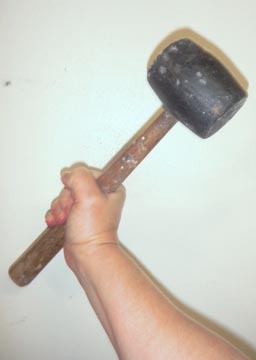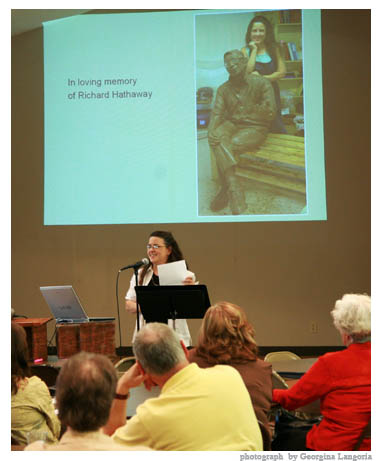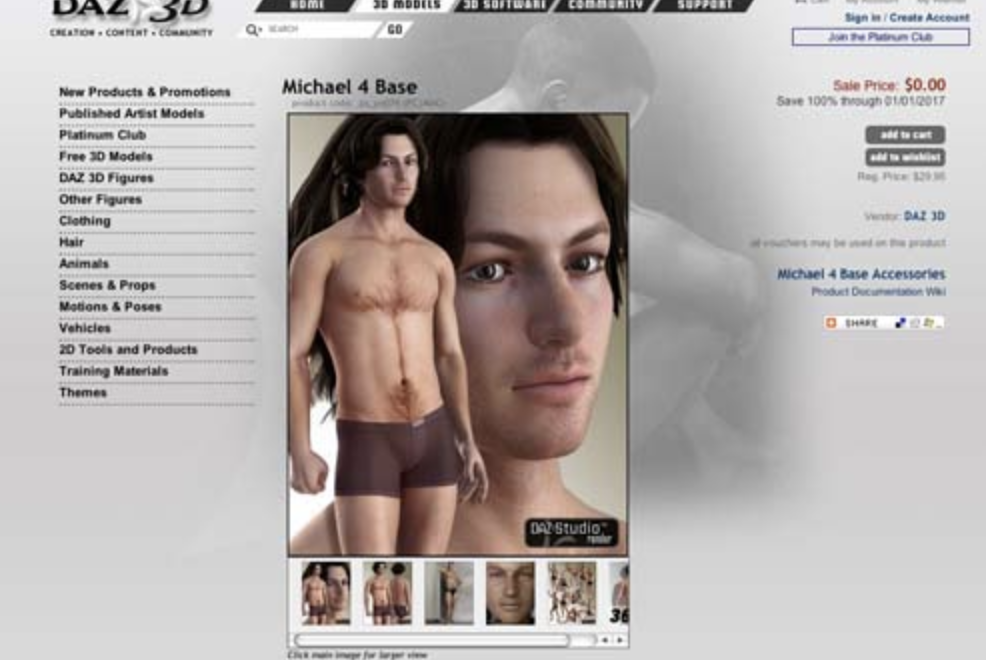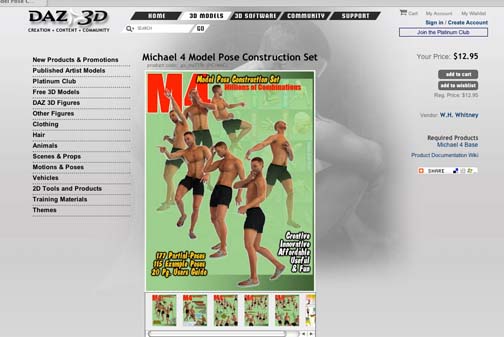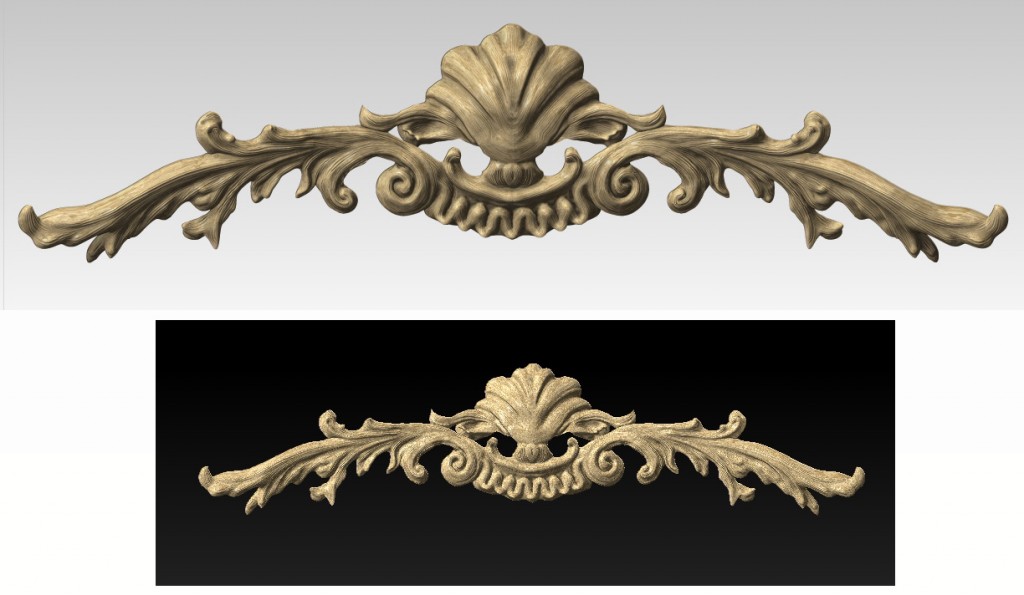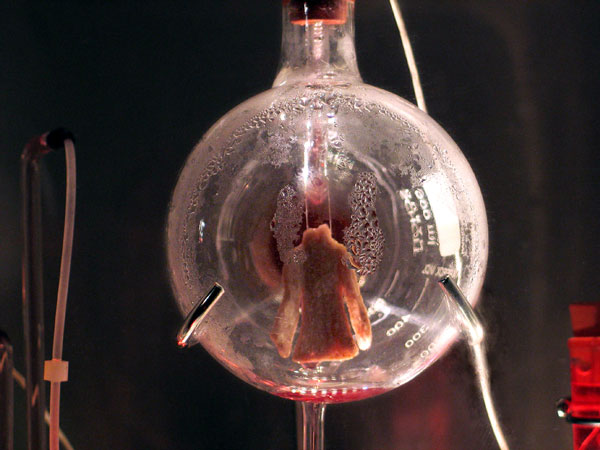Art and Technology
What Do You Miss In The Digital Sculpting Technology? An Interview Cont.
7. What do you miss in the digital sculpting technology?
As mentioned before, ease and affordability of output. Ease of quickly sculpting without having to worry about topology. As I have mentioned before, retopologizing is actually the holy grail of this process. However, I have seen this change over the last year, and it is quickly becoming a non issue. I look forward to exploring these in the up and coming months.
At first I might have missed much about traditional and I still will continue in it. However, one of the main factors that pushed me in the direction of this exploration was damage to my hand, I could no longer hold a sculpting tool. Years of pushing and pulling clay, pounding with tools or scraping had taken its toll. I have since had surgery and am happy to say I have my hand back, but the advances and exploration of this digital technology will be a very important element of creating late in life, when my body may rise up again in revolt. It has extended my tool set and capabilities as a sculptor far beyond anything I could have imagined for myself.
This is an interview of 10 questions by Mathias Herbster of FH Vorarlberg University in Austria directed to Sculptor Bridgette Mongeon about the comparison of digital and traditional sculpture.
______________________________________________________________
Bridgette Mongeon is a sculptor, writer, illustrator and educator as well as a public speaker.
Her blog can be found at https://creativesculpture.com.
She is also the owner and creator of the God’s Word Collectible Sculpture series
Follow the artists on twitter twitter.com/Sculptorwritertwitter.com/creategodsword
Facebook http://www.facebook.com/bridgette.mongeon
Listen to The Creative Christian Podcast or the Inspiration/Generation Podcast Click on Podcast Host Bios for a list of all podcasts.
Listen to the Art and Technology Podcast
Which Medium Do You Think Is More Flexible, Digital or Analog Clay? An Austrian Student Interview Cont.
2. Which medium do you think is more flexible, digital or analog clay?
I have described a bit of this in a previous post, however, in defense of digital sculpting, the tools that are available intrigues me. For example, sculpting symmetrically, though no person is symmetrical, I can change that at the end. But in digital I don’t have to sculpt two eyes, or two ears, etc. When I can shorten the amount of time of getting the shape and instead focus on the detail the technical process allows me more time for creativity.
By far the most hindering part of the digital process is the output. There are still a few factors that interfere with my process in this area. One is cost, and the other is the medium, also the build envelope or size. I’m finishing a bust in traditional clay right now, but I would much rather have created it digitally. However, my resources for out put would have been milling in foam, a good armature for larger pieces, but I would have still had to do the details again, and I do not like the stiff look that a piece of foam covered in clay has.

I could mill it out in stone; I must say I anxious to have a project where I can explore this more. All my life I have sculpted in clay, concrete, bronze or pourable mediums. Now with digital milling in stone I can extend my tool set to “stone carver”. With the Digital Stone project, I can create artwork in this medium, as well. This excites me to no end. When I think of the possibilities I also consider the many projects I have given up over the years not having this skill set.
I also love the idea of doing more architectural sculpting work using the digital tools. Creating a finial and being to enlarge it 20% or anything in steps of enlargement is huge. There is no price that can be put on that.
However, digital printing in any other medium is not a viable option, either because of the build envelope or the cost.
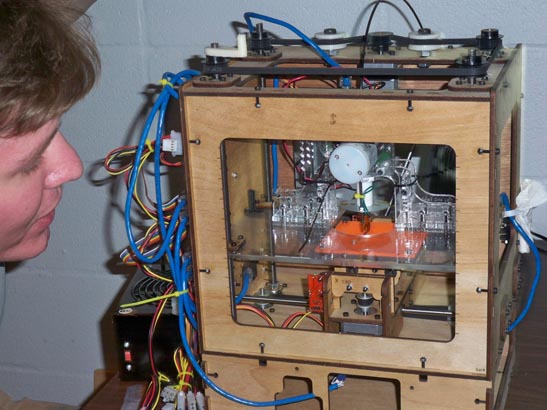
Im intrigued with the research at Solheim Additive Manufacturing Laboratory in the Mechanical Engineering Department on the University of Washington campus. If only I could create in the computer and then digitally print out my form in clay in my own studio, like they are doing at this lab. I think this would be a viable resource for me. I know that the open source “free” 3d printers like Rep Rap or maker bot have some attachments to digitally print in clay, and I’m waiting to see how these evolve.
I think another resources is materialize by .mGX for going directly to bronze, though very expensive. I have visions of using them on an intricate piece similar to Alfred Gilbert’s Virgin Mary or St. Michael. Pieces that would be a nightmare to recreate in a triditional bronze process but could easily be done with .MGX.
The very near future will drastically change the way I work. As many of the patents have ended on 3D printing, I believe you will begin to see a change in the cost factor and availability of home 3D printers. I still may be limited by the build size, unless, of course, I can figure out how to change a machine to accommodate my needs. I’m not sure I am that mechanically savvy.
As I write this, I find an aching. To go from screen to finished project without touching it leaves a hole inside of me. I am afraid I will not be able to “feel” the emotion of the piece unless I touch it. Oh, this is a strange thought.
Though looking at the quick sketches in my Mudbox video I can feel the emotion without touch. Will it feel the same digitally printed?
Remember, I am still a traditional artist. I get paid for a tangible piece of art. I need to get the sculptures out of the computer. I must base my choices on that final output.
This is an interview of 10 questions by Mathias Herbster of FH Vorarlberg University in Austria directed to Sculptor Bridgette Mongeon about the comparison of digital and traditional sculpture.
_____________________________________________________________________________

-Sculptor, Writer and Speaker
Bridgette Mongeon is a sculptor, writer, illustrator and educator as well as a public speaker.
Her blog can be found at https://creativesculpture.com.
She is also the owner and creator of the God’s Word Collectible Sculpture series
Follow the artists on twitter twitter.com/Sculptorwriter twitter.com/creategodsword
Facebook http://www.facebook.com/bridgette.mongeon
Listen to The Creative Christian Podcast or the Inspiration/Generation Podcast Click on Podcast Host Bios for a list of all podcasts.
Listen to the Art and Technology Podcast
An Austrian Student Interviews Me On Comparison Of Digital And Traditional Sculpture
I have worked hard over the last few years exploring the digital technology and trying to bridge the gap between digital sculpture and traditional sculpture. I have explored the process in my book Digital Sculpting inMudbox Essential Tools and Techniques for artists, with the Art and Technology podcasts, and in lectures that I have presented to organizations and institutions. Should your institution want me to come and talk about these topics, please feel free to contact me with the details.
My graduate studies and the writing of my first novel distracted me for the past year, but I’m looking forward to getting back to the topics surrounding digital technology. The technology continues to change. I really want to write a book about the technology and the processes. It would be wonderful to focus on the incredbiel artwork stemming from the use of this technology. I see it as a guidebook of resources, as well. There are also many new issues surrounding the use of digital technology that need to be addressed. I’m still looking for a publisher that will get behind the need for this information.
Today, I woke and found an e-mail in my in box from a student from FH Vorarlberg University in Austria. Mathias has the same desire and direction and focus that I have with sculpting/digitally and traditionally and wants to interview me. I’m flattered, but more than that I feel comforted. In my life, it is extremely important to pass on information and help others. I find it in all aspects of my life— a driving force. To see that my podcasts, articles, books and desire have reached half way around the world to someone else with the same passion and direction, is inspiring. I thought it would be interesting to answer these questions publicly on my forum.
_____________________________________________________________________________

Sculptor, Writer and Speaker
Bridgette Mongeon is a sculptor, writer, illustrator and educator as well as a public speaker.
Her blog can be found at https://creativesculpture.com.
She is also the owner and creator of the God’s Word Collectible Sculpture series
Follow the artists on twitter twitter.com/Sculptorwriter twitter.com/creategodsword
Facebook http://www.facebook.com/bridgette.mongeon
Listen to The Creative Christian Podcast or the Inspiration/Generation Podcast Click on Podcast Host Bios for a list of all podcasts.
Listen to the Art and Technology Podcast
“Browsing The Archives?”

A fellow graduate classmate posted that “browsing the archives” of a blog is like “walking down memory lane”, she wondered if that would become a new saying. As I “brows the archives” of my life, I realize I don’t write just because I love to write, I write because I have a terrible memory. Documenting helps me to recall. In light of that, here are some of my blogs and recollections.
Creative Endeavors Blog—Began posting May 2005— 6 years of blogging
This blog documents my creative process in many different areas—sculpting, 3D, writing, teaching and marketing in the arts.
I love reading about all of my projects, and I especially love that this blog documents our creation of the new studio space. A hug change from my old place
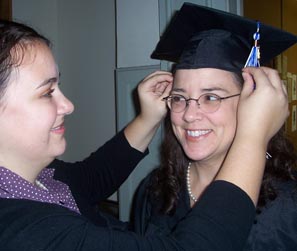
going back to school – finishing my
undergraduate at Vermont College and my
terminal degree at Goddard.
Perpetual Learner Blog – Began posting in March 2005-6 years of blogging
I began this blog when I decided to go back to undergraduate school as a nontraditional student. Nontraditional basically means—your old. The blog started in March of 2005 and documents the entire process of undergraduate school at Vermont College, and then graduate school at Goddard. I will finish graduate school in January of 2012. I have no idea where this blog will go from there. I am, however, a perpetual learner, so I doubt it will stop.

Richard Hathaway Blog– Began in March of 2006
This blog documents the sculptural process of creating a life-size bronze of Professor Richard Hathaway for the T.W. Wood Gallery in Vermont . The sculpture was installed in Vermont a few years back. I visit the bronze often and people send pictures and memories, which I continue to post.
The Newsboy PRE BLOG- If only I had known about blogs then, started 2004- 8 months. In 2020 these html blog pages where merged into this blog. Just follow the category Newsboy.
This is a documentation of the creating of a life-size newsboy sculpture for the Texas Press Association. The edition is an edition of 10, so when one is sold I document where the additional pieces in the sculpture has gone. If only there were blogs back then or I would have known about them. It was murder trying to create html pages for each of these posts, with links that worked to the next post.
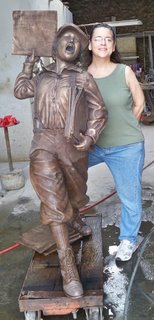
newsboy sculpture was
documented on my website
prior to blogging. I love
the educational element that
I added. Materials for teachers
and students to use. I would
love to do more blogging
that can be used in education
either with art or travel.
What is next?
Blogging gives me the opportunity to invite individuals from all over the world to view my work in my studio. When a project comes up, I’m always thinking about blogging. Perhaps it is a personal commissions and the family that is around the world can watch it being created. I’d love to do something for a school or program that would incorporate my blogging and sculpting as an education for young people, especially if I could have the interaction of the students. Now that would be the icing on the cake. If you have a project and want to get lots of people involved in the creating of it, give me a call, we can create a blog especially for your project documenting the entire thing.
I’m not sure who reads the blogs. I try to have helpful information in them. Will there be more blogs? Yes, actually I just purchased another domain. I’m going to start a blog for just my writing projects. Thanks for sharing in my own walk in life. It is my goal to help and encourage as many people as I can along the way.
The act of putting pen to paper encourages pause for thought,
this in turn makes us think more deeply about life,
which helps us regain our equilibrium. ~Norbet Platt
_____________________________________________________________________________

Sculptor, Writer and Speaker
Bridgette Mongeon is a sculptor, writer, illustrator and educator as well as a public speaker.
Her blog can be found at https://creativesculpture.com.
She is also the owner and creator of the God’s Word Collectible Sculpture series
Follow the artists on twitter twitter.com/Sculptorwriter twitter.com/creategodsword
Facebook http://www.facebook.com/bridgette.mongeon
Listen to The Creative Christian Podcast or the Inspiration/Generation Podcast Click on Podcast Host Bios for a list of all podcasts.
Listen to the Art and Technology Podcast
Working Through Presentations- Daz-Poser-Zbrush-Part 1
Poser– In my life as a sculptor I rarely do to show clients, not hand drawn sketches. But over the past years I have begun utilizing 3D resources for presentations. I have mentioned this before in my blog and also talked about it in some of my online videos. I am presently trying to come up with a design for a figurine of a person playing ultimate Frisbee.
Of course the first place I turn to when I am creating these type of presentations, if I don’t already have what I need, is Daz. I liked the Michael model as he had the youthful appearance I was after. Plus he also came with many different things. And to discover he was free was a plus. Of course I also invested into his clothes, as I felt these would give me the closest look to an Ultimate players clothes. The model posing set for this was definitely worth it as it comes with individual arm, and leg poses. Of course if you have worked with Poser you can pose the model yourself, but it is much easier to do that if the model is close to what you want, then you can tweak it as necessary.
I must say my Poser 7 was giving me a little bit of a trouble if I tried to pose these two characters individually and then merge them-crash after crash. I was much better to pose one then bring another into the scene in neutral position to pose that one. I should probably choose to use the free daz program, and I have downloaded it but I am quicker at Poser. I am not sure that upgrading to Poser 8 will make much difference for me.
I am working with a couple of different designs with this piece. I really want to get the main character off of the ground. Flight seems to be such a big part of ultimate. However, flight is hard to do when you are working with bronze. Sure, I can have him coming up into flight with a foot touching the ground. But that is something that must be engineered. Depending on the size and weight of the piece it can be a nightmare.
After watching hours of ultimate video and stopping and rewinding, I decided I could have my main character “secured” in flight to another person. Especially if they were kind of body slamming. So this is the beginning of one design using Poser. I know my client may like to have just the one figure in the piece, but I think having two really adds the action to the sculpture.
I’m not sure why Poser is giving me the “banding” on the pants. But I have future plans for this presentation before the client sees it. Stay tuned- more cool stuff coming in the next posts.
Her blog can be found at https://creativesculpture.com.
She is also the owner and creator of the God’s Word Collectible Sculpture series
Follow the artists on twitter twitter.com/Sculptorwriter twitter.com/creategodsword
Facebook http://www.facebook.com/bridgette.mongeon
Listen to The Creative Christian Podcast or the Inspiration/Generation Podcast Click on Podcast Host Bios for a list of all podcasts.
Listen to the Art and Technology Podcast
Very Excited About New Marketing Brochure
We have been working diligently on a couple of different marketing plans and target markets. The first is a brochure that is going out to architects, landscape Architects, Interior Designers, and Landscape Designers.
I’m thrilled because it introduced our new digital sculpting services.
This is a tri fold brochure.It has been created by the new intern, Tiffany Post Actually she is not my intern she belongs to my husband’s company, MD Communications next door, but she has been on loan to me for the last couple of weeks. Tiffany is graduating from The Art Institute of Houston. She hopes to get a job in design. I am sure she would be open to freelance work if anyone needs anything, and at a good price. Great way for her to build a portfolio.

It can be a self mailer,
but who could put a label over that lion.
I really like the way the back came out.
Good thing the cards come with envelopes.
The printer we are using on this job was recommended by designer and photographer Christian Sizemore. She also does freelance work. WHCC has reasonable prices and does some nice work.
I would love to hear what others think about the brochure. Will be sent to printer next week.
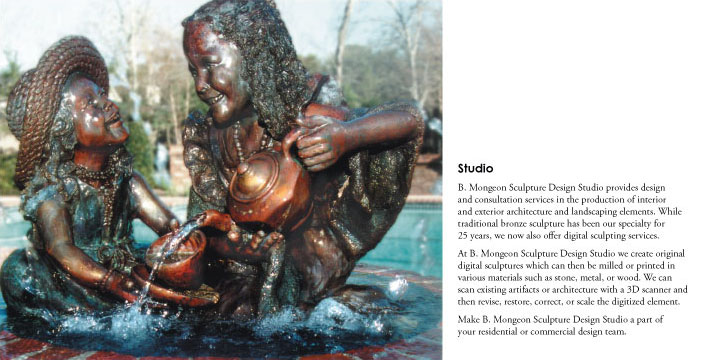

______________________________________________________________________________

Sculptor, Writer and Speaker
Bridgette Mongeon is a sculptor, writer and educator as well as a public speaker.
Her blog can be found at https://creativesculpture.com.
She is also the owner and creator of the God’s Word Collectible Sculpture series
Follow the artists on twitter twitter.com/Sculptorwriter twitter.com/creategodsword
Facebook http://www.facebook.com/bridgette.mongeon
Listen to The Creative Christian Podcast or the Inspiration/Generation Podcast Click on Podcast Host Bios for a list of all podcasts.
Listen to the Art and Technology Podcast
Molecular Animation?
Art and Science are being merged in many different ways. It was not long ago that I interviewed Oron Catts from The University of Western Australia. In an online podcast. we talked about how they are combining artists and scientists in a collaborative research laboratory.
The Museum of Modern Art (MOMA) began to see the importance of this marriage of art and science as they presented the exhibit Design and the Elastic Mind.
As their website states, “Design and the Elastic Mind explores the reciprocal relationship between science and design in the contemporary world by bringing together design objects and concepts that marry the most advanced scientific research with attentive consideration of human limitations, habits, and aspirations. The exhibition highlights designers’ ability to grasp momentous changes in technology, science, and history—changes that demand or reflect major adjustments in human behavior—and translate them into objects that people can actually understand and use. This Web site presents over three hundred of these works, including fifty projects that are not featured in the gallery exhibition.”
And now biologist are working with animation to create what is known as a new field of molecular animation. As expressed in this new York Times article, Where Cineman and Biology Meet
Inside the New World of Molecular Animation
Now, wouldn’t it be fascinating if Harvard developed a program that would combine animators with biologists as The University of Western Australia has done with science and artists? Some biologists, like Dr. Iwasa, with a grant from the National Science Foundation, traveled to California to learn animation along side those hoping to enter Pixologic. Dr. Iwasa wanted the knowledge of the animation tools to depict biological information not to animate Woody!
My intrigue with this meeting of science and animation stems from my husband Mike delaflor, a medical illustrator. Mike’s desire is to make science more accessible and understandable. He is thrilled about the idea of this new field and would like to be a part of it.
I think it’s a gold rush right now. Because a lot of the things that we have shown, have never been shown.
Robert Lue, Ph.D. Professor of Molecular and Cellular Biology Harvard University.
The posted movie “The Animators of Life” talk about this new and enticing field. We will be watching closely. So Harvard, open this relationship further and encourage this marriage of animators and biologists as The University of Australia did with science and art. By the way, bring on medical Illustrator Mike de la Flor.
______________________________________________________________________________

-Sculptor, Writer and Speaker
Bridgette Mongeon is a sculptor, writer and educator as well as a public speaker.
Her blog can be found at https://creativesculpture.com.
She is also the owner and creator of the God’s Word Collectible Sculpture series
Follow the artists on twitter twitter.com/Sculptorwriter twitter.com/creategodsword
Facebook http://www.facebook.com/bridgette.mongeon
Listen to The Creative Christian Podcast or the Inspiration/Generation Podcast Click on Podcast Host Bios for a list of all podcasts.
Listen to the Art and Technology Podcast
Wow, It Is Like Having An Entirely New Art Tool That Makes My Work Look Spectacular!
I have been learning Zbrush4 for a while now. Though there is so much to learn. I have to admit, I can’t spend nearly as much time with it as I like. Zbrush 4 has something called Best Preview Render. For those of you interested in checking it out there is a link to the pixologic site that shows the details.
I still must study all of the bells and whistles of this feature of Zbrush, however, I must say I am thrilled with just my few tries of this feature. For example, I am including two screen shots in this blog post. One with the render, one without. World of difference. The feature, makes me want to create. It is like pressing a button and someone coming in and making your work look great.
Now back to playing.. uhmm I mean working.
______________________________________________________________________________

-Sculptor, Writer and Speaker
Bridgette Mongeon is a sculptor, writer and educator as well as a public speaker.
Her blog can be found at https://creativesculpture.com.
She is also the owner and creator of the God’s Word Collectible Sculpture series
Follow the artists on twitter twitter.com/Sculptorwriter twitter.com/creategodsword
Facebook http://www.facebook.com/bridgette.mongeon
Listen to The Creative Christian Podcast or the Inspiration/Generation Podcast Click on Podcast Host Bios for a list of all podcasts.
Listen to the Art and Technology Podcast
A New Book Proposal
I just sent a new book proposal to the publisher. Art and Technology- Exploration of resources and advancements in digital sculpting, printing, milling and scanning. I know, I am just able to breath after fishing Digital Sculpting with Mudbox Essential Tools and Techniques for Artists.
I’m also knee deep in the Art and Technology podcast and the new website at http://www.digitalsculpting.net
The new book project is terribly exciting. It will feature a great deal of the research I am doing on this subject for my graduate studies. As I stated in the book proposal.
Art and Technology- Exploration of resources and advancements in digital sculpting, printing, milling and scanning. Finally, a resource guide for understanding and accessing tools in digital printing, milling and scanning. This technology is not just for manufacturing or engineering but can be embraced by designers, traditional and graphic artists who want to utilize these technologies in their creativity and in their workflow. This resource breaks down the process and possibilities for artists.
This book helps to inspire, as artists can see what others have created and push their imagination utilizing new technology. The technology can help save artists time and help artists create in ways that have never been conceivable until this time. Inspiration- strengthens your creativity and enlarges your artistic tool set.
I should know something in two – three weeks.
Frankensteinian Art?
My studies of researching digital technology and incorporating it into my traditional sculpting processes is part of what I am doing for my graduate degree at Goddard. It has taken me to places I would have never dreamed of going. Several months ago while researching 3d printers I began to realize that individuals were pushing anything they could through the printers to see what would happen, metal, ceramic, even glass. It was then that I wondered about biology. And I was certainly thrown for a loop when I found that they were printing bone, skin and now even organs. I wrote about this and had several links to articles about the subject in the October 28th blog article, I’m a genius! 3D Printing of the Human Organs?
I did, at that time, however, happen upon another artist’s work that after finding and reading I quickly clicked off of. The project has haunted me since then. There was such uneasiness when I first happened upon it that I didn’t even put it in my college bibliography. I am wondering now, why. Why am I so uneasy? It was exciting for me to find that science is now printing biology, and that someday, if I need a kidney I might be able to have my own kidney printed. But incorporating this other type of biology into art left me feeling uncomfortable. The topic has come up more than once since this first encounter with Stelarc’s art piece The Partial Head. The Partial Head is a prosthetic portrait of the artist that is computer generated and can talk to the viewer. This portrait is digitally printed and then seeded with living cells. Of course, the artwork needed a bioreactor/incubator circulatory system to survive. It only lived a week before becoming contaminated and “died.”
The Partial Head website acknowledges the collaboration of, The Tissue Culture & Arts Project (TC&A). http://www.tca.uwa.edu.au/ In a Leonardo Journal, article entitled, Growing Semi-Living Sculpture: The Tissue Culture & Art Project by Oron Catts and Ionat Zurr it state that they use “living tissue to create/grow semi-living object/sculptures and to research the technologies involved in such a task.” I need to examine, in my own mind, why creating organs to extend life, and using living cells to create art feels so different to me. Though both remind me of the scene from the movie Frankenstein.
Victor Moritz: Henry – In the name of God!
Henry Frankenstein: Oh, in the name of God! Now I know what it feels like to be God!
Is it my cultural upbringing that makes me uneasy about this? I have warned myself to be careful. Some fear is healthy; it does keep us from danger, however, it can also keep us from exploration. The difficulty is in knowing when have we gone too far.
Doctor Waldman: You have created a monster, and it will destroy you!
Another Sterlarc’s project consists of growing a 1 /2 scale ear. In another piece of art titled. Victimless Leather The TC&A project works at initiating a discomfort in the viewer as they digitally print a miniature coat over scaffolding with tissue that looks like — human skin.
Of course, growing things can be found everywhere. How is this technology any different than growing a topiary over a metal structure that becomes a living thing that will grow and I must tend? There are many ethical questions raised with TC&A ‘s project. For example, “Do these entities contribute to the objectification of living organisms?” In my previous comparison I honestly don’t feel that I am objectifying the ivy on the topiary. Nor do I feel I am killing portions of it when I prune the art. How is this different? Are we enthused with our control over the living material? This Frankensteinian idea towards art was also expressed in a recent Art and Technology podcast that I conducted with Robert Michael Smith. It appears these questions will continue to be raised and that artists that are presented with tools to push their creative limits and to initiate a reaction in the viewer will do so. It has certainly initiated a reaction from me. It will continue, and we just may see more art that for lack of a better word, can be referred to as Frankensteinian.
TC&A also examines, “the gap between the fast pace of development in science and technology and the slower pace of cultural understanding and adaptation.” They are indeed pushing the limits of acceptance both socially and culturally. They hope that the term “semi living object/products and sculptures” will make the art more palatable. “Our art challenges many people to examine their perception of the boundary between the living and the inanimate:” Their goal is get these projects to a point where the art can live out of their contained environment and provide tactile interaction with the viewer. I’m sure this will not be the last you hear about this subject on this blog, or the Art and Technology podcast. But I’m interested in knowing what other people feel about these works of… “art?”
Look! It’s moving. It’s alive. It’s alive… It’s alive, it’s moving, it’s alive, it’s alive, it’s alive, it’s alive, IT’S ALIVE!
Henry Frankenstein
( Oron Catts will be one of my up and coming interviews ( INTERVIEW) on the Art and Technology Podcast listen from the Digital Sculpting.net website or Subscribe to the podcast in itunes ) This podcast was recorded May 23, 2010 and will be up at the http://www.digitalsculpting.net website by May29th.
If you are reading this blog post from facebook and do not see the videos and or photographs visit https://creativesculpture.com/blog

